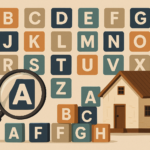
Key takeaways
The “Lost Decade” (2012–2022) of wage stagnation cost Australian workers a combined $600 billion in lost wages.
On an individual level, the average worker missed out on around $54,000 over 10 years—enough for a home deposit.
Wages grew just 0.2% annually during that decade, leaving the average income in 2025 around $12,000 lower per year than it would have been with historical growth trends.
Many young Australians now believe their only chance of owning a home is through inheritance, highlighting a loss of social mobility.
Since late 2022, real wages have started rising again: wage share of national income has grown by 3.8 percentage points, while profit share has fallen by 4.6 points.
If sustained, this wage recovery could improve housing affordability, giving younger generations renewed hope of achieving home ownership.
For years, Australians have been asking themselves why saving for a home feels harder than ever.
While soaring property prices grab most of the headlines, there’s another culprit that doesn’t get nearly enough attention: wages.
A new report by Per Capita titled The Lost Decade has revealed just how much low wage growth has held Australians back between 2012 and 2022. And the numbers are eye-watering.
In that 10-year period, wages barely inched forward, just 0.2% annually on average, leaving the typical worker about $12,000 a year worse off by 2025 compared to where they would have been if historical wage growth had continued.
Over the decade, that amounts to around $600 billion in lost wages across the economy.
For young Australians, that translates to around $54,000 less in the bank, enough to cover a deposit on a starter home.

Why this matters for first-home buyers
Housing prices surged while wages stalled, creating one of the most unequal decades on record.
Emma Dawson, lead author of the report, points out that the typical first-home buyer today is a couple in their mid-30s borrowing just under $500,000.
If they’d enjoyed the same wage growth their parents experienced at the start of their careers, they would have earned an extra $108,000 between them.
That’s a deposit. That’s financial freedom. That’s the difference between entering the market early and compounding wealth over decades… versus renting indefinitely.
Instead, many Millennials and Gen Z Australians feel that the only way they’ll ever buy a home is through a large inheritance.
As Dawson puts it, it’s a “damning indictment” of how far social mobility has slipped in what was once known as the land of the fair go.
A glimmer of hope?
The good news is that the tide may be turning.
Since late 2022, real wages have begun to grow again, with the wage share of national income rising 3.8 percentage points, while the profit share has fallen by 4.6 percentage points.
If this continues, young Australians may finally see some relief.
A return to healthy wage growth could help close the gap between income and house prices, making deposits feel less like an impossible mountain to climb.
What this means going forward
The report serves as a wake-up call.
Wage stagnation doesn’t just affect day-to-day living standards—it fundamentally changes the trajectory of people’s lives.
When wages fail to keep pace with housing and asset growth, entire generations are left behind.
Yes, property prices will always fluctuate with supply, demand, interest rates, and sentiment.
But if Australians want a fair shot at the great dream of home ownership, sustainable wage growth must be part of the conversation.
And while recent data gives reason for cautious optimism, young Australians can’t afford to lose another decade.














